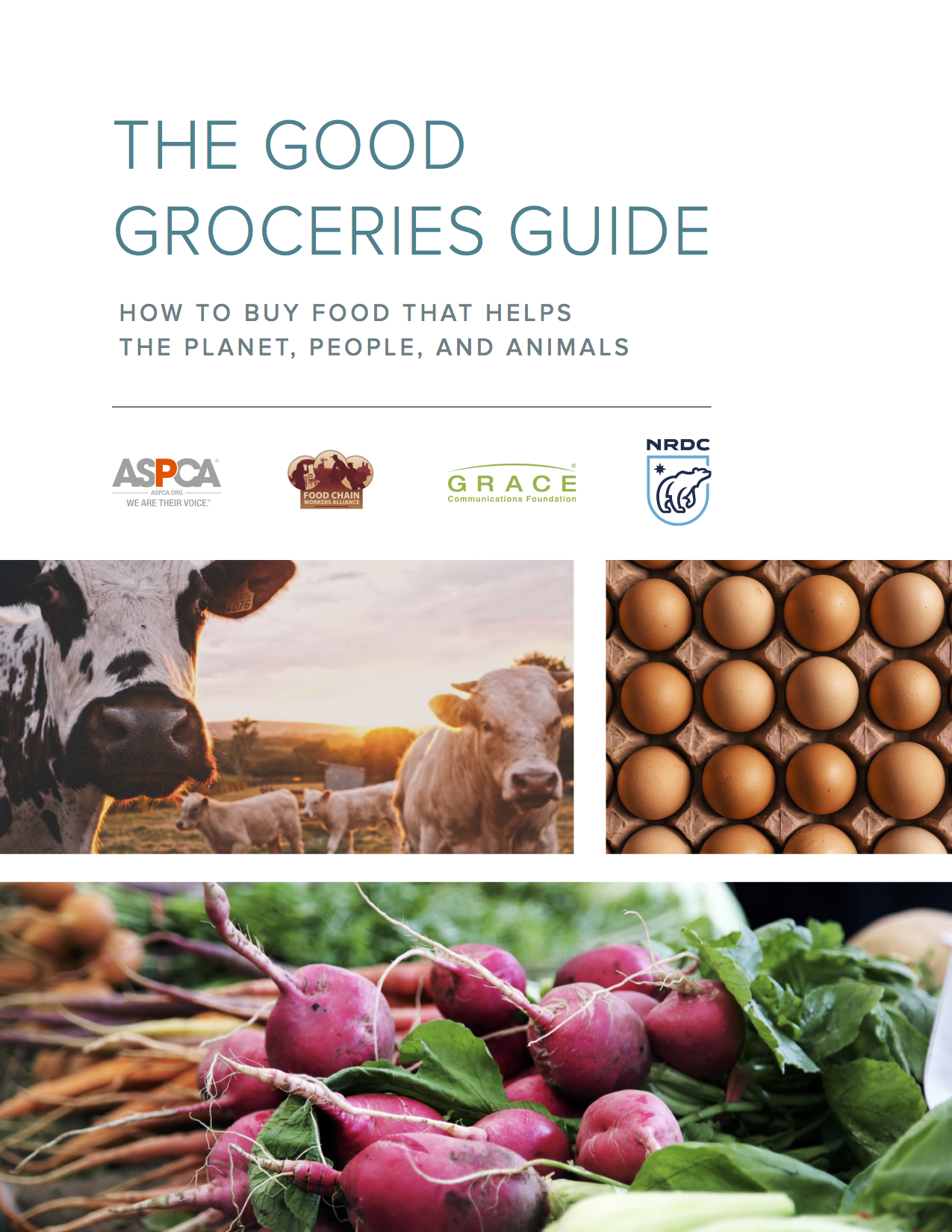
HOW TO BUY FOOD THAT HELPS THE PLANET, PEOPLE, AND ANIMALS

Today’s consumers are increasingly concerned about where their food comes from, and for good reason. The rapid industrialization of our food system has led to widespread problems such as foodborne illnesses, worker exploitation, animal abuse, and environmental degradation.
Recognizing that these problems — and their solutions — are interconnected, the American Society for the Prevention of Cruelty to Animals, Food Chain Workers Alliance, the Natural Resources Defense Council, and GRACE Communications Foundation have teamed up to produce a guide for today’s conscientious consumer.
This guide will sharpen your shopping skills and explain how you can:
Avoid marketing claims and choose more humane, just, and sustainably certified foods
• Some labels like “natural,” “humane,” or “fair” sound good but don’t actually represent an improvement in how the food was produced.
• Certifications like Animal Welfare Approved, Certified Humane, or Global Animal Partnership (Steps 2 and up) require meaningfully better treatment of animals.
• Buying meat from animals raised without routine antibiotics helps fight the spread of antibiotic resistant superbugs.
• Food Justice Certified and other labels help protect workers throughout the food supply chain.
• Organic and other sustainability certifications require food to be produced without harmful synthetic pesticides and fertilizers.
Serve and eat more plant-based foods
• By eating more plant-based foods, we can reduce the number of animals in factory farms, cut greenhouse gas emissions, and grow more food for humans.
Buy local in-season food when you can
• By purchasing locally grown and raised food, you’ll keep more of your shopping dollars in the local economy and support farmers directly.
Fight food waste
• Consumers can slash food waste — and their annual grocery bill — by shopping wisely, getting portion sizes right, storing leftovers, and other easy practices.
Make your voice heard
• Ask where your food comes from, how it was produced, and if the supplier has made commitments to protect workers, farm animals, and the environment.
With every purchase of more sustainably produced food, consumers are on the front lines of the movement to make our food supply healthier for people, animals, and the planet.
Download the Guide | English (PDF)
Descarga el Guión | Español (PDF)
